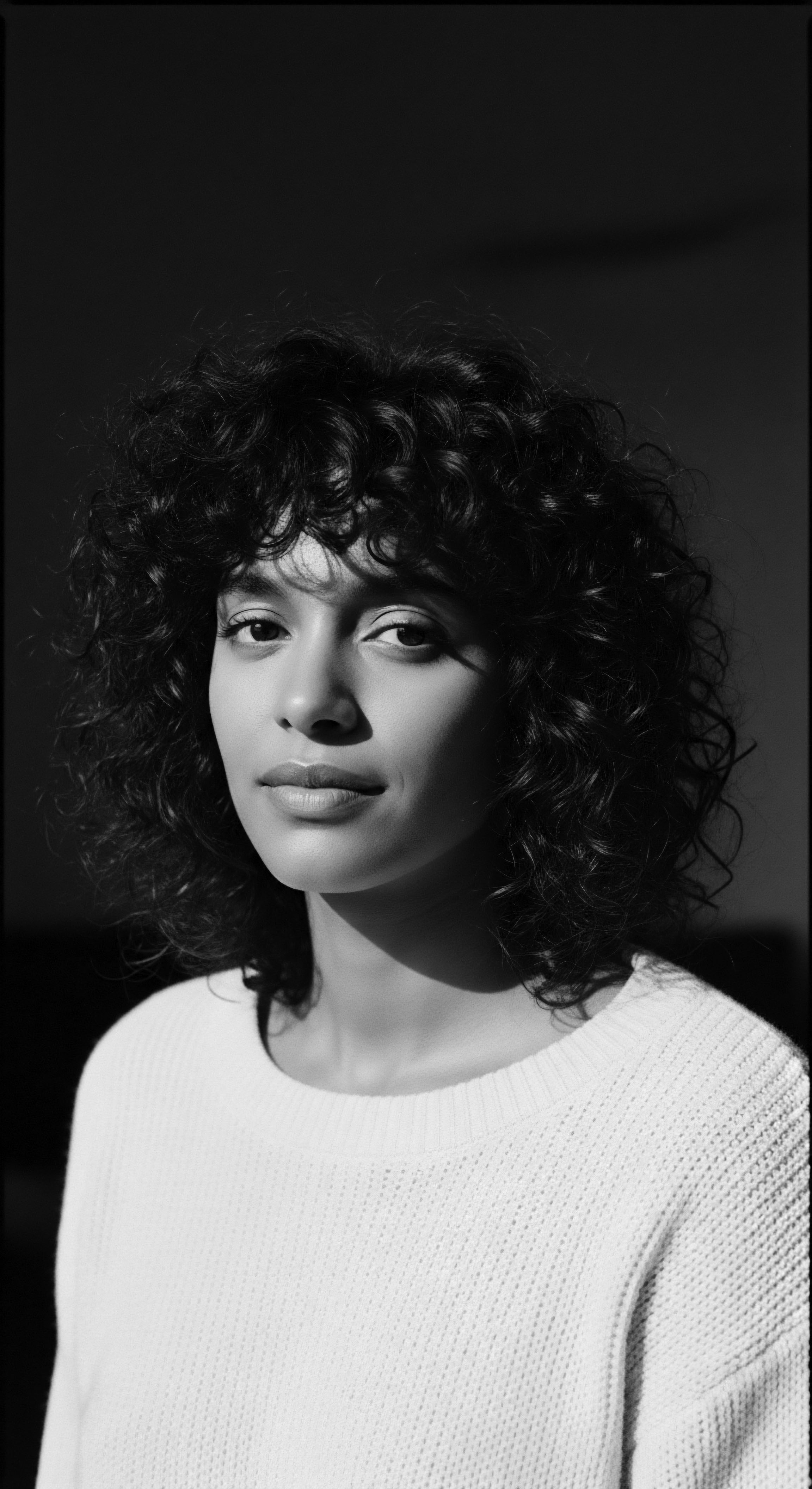
Fundamentals
The concept of Textured Hair Styling, at its most elemental, describes the deliberate manipulation and arrangement of hair that possesses a natural curl, coil, or wave pattern. This practice extends far beyond mere aesthetic choice; it represents a profound dialogue between human ingenuity and the intrinsic properties of hair itself. From the earliest communal gatherings to the intimate rituals of personal care, shaping textured hair has always carried layers of meaning, often speaking volumes without uttering a single word. It is a fundamental human expression, a method of care, and a marker of belonging that stretches back through the mists of time, deeply rooted in the collective memory of humanity.
This initial understanding clarifies that Textured Hair Styling is not a singular action, but rather a spectrum of practices. It involves an array of techniques designed to manage, protect, and adorn hair that naturally defies a straight, linear fall. The inherent characteristics of textured hair – its varying degrees of curl, its unique density, its propensity for shrinkage, and its distinctive moisture needs – necessitate specific approaches.
These methods, refined over generations, address both the structural requirements of the hair and the desires of the individual or community to convey identity, status, or belief. The foundational acts of braiding, twisting, coiling, and knotting are not modern inventions; they are echoes from ancient sources, foundational gestures passed down through countless hands, each imparting a piece of ancestral wisdom.
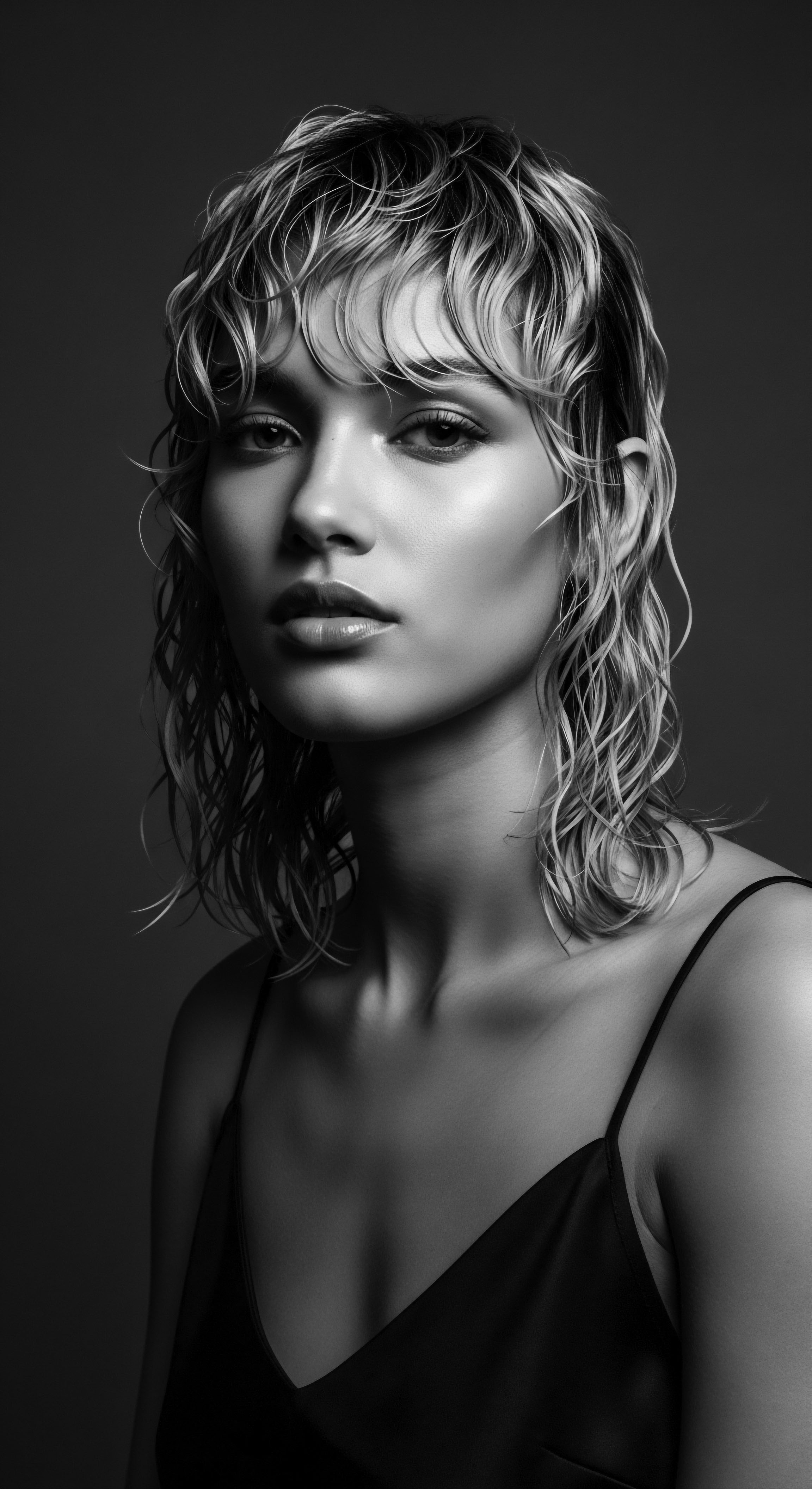
The Earliest Expressions of Hair Form
Long before written records, human societies across the globe engaged in hair manipulation. For textured hair, this was not simply about appearance; it was about survival and connection. Protecting the scalp from the sun’s harsh rays, keeping hair out of the eyes during daily tasks, or preventing tangles that could lead to breakage were practical concerns. Yet, even in these rudimentary acts, a deeper purpose began to coalesce.
The earliest forms of Textured Hair Styling were utilitarian, certainly, but they quickly evolved into something more. They became visual dialects, speaking of one’s lineage, one’s role within the community, or one’s spiritual inclinations.
Consider the ancient practices of hair partitioning and sectioning, foundational steps in many textured hair styles. These were not arbitrary divisions; they often followed the natural growth patterns of the hair, respecting its organic flow. The very act of separating strands, of creating distinct sections, mirrored the organization of early societies, where roles were defined and communal structures maintained order.
The application of natural emollients, derived from plants and animals, served to lubricate the strands, making them more pliable for manipulation and protecting them from environmental stressors. These were the first steps in a long lineage of hair care that recognized the unique needs of textured strands.

The Purpose Beyond the Practical
The initial purposes of Textured Hair Styling quickly broadened to encompass far more than mere utility. Hair became a living canvas, a potent symbol.
- Protection ❉ Shielding delicate strands from environmental damage, whether from sun, wind, or dust.
- Hygiene ❉ Keeping hair clean and manageable, preventing matting and facilitating easier cleansing.
- Identification ❉ Signifying tribal affiliation, social standing, age, marital status, or even religious devotion.
- Adornment ❉ Enhancing beauty and expressing personal or communal aesthetic values.
- Communication ❉ Conveying messages, historical events, or even maps in times of duress.
Each twist, each braid, each careful placement of a coil carried an implicit understanding, a silent communication within the community. The delineation of meaning in these early styles laid the groundwork for the rich and complex heritage of Textured Hair Styling that would unfold over millennia. It was, in essence, the very beginning of hair as a profound language.
Textured Hair Styling, at its foundation, is the intentional shaping of naturally coiled, curled, or wavy hair, extending from practical necessity to deep cultural expression.

Intermediate
Moving beyond the foundational elements, an intermediate understanding of Textured Hair Styling begins to reveal its intricate layers of cultural evolution and scientific interplay. It is here that we discern how practices, born of necessity and tradition, adapted across continents and through eras, always retaining a deep connection to the identity of those who wore them. The styles are not static artifacts; they are living testaments to resilience, creativity, and the enduring spirit of communities, particularly those of Black and mixed-race heritage, whose hair has often been a site of both struggle and celebration.
The definition of Textured Hair Styling expands at this level to encompass the conscious choices made regarding technique, product, and aesthetic, all informed by a growing awareness of hair’s unique biological structure and its profound cultural weight. It is the point where the ‘how’ of styling meets the ‘why’ of its significance, inviting a deeper appreciation for the journey of textured hair through history.

The Evolving Techniques and Their Cultural Resonance
The methods employed in Textured Hair Styling have undergone continuous refinement, yet many core techniques remain remarkably consistent with their ancestral origins. Braiding, for instance, has diversified into countless forms—cornrows, box braids, micro braids, Ghana braids—each carrying distinct cultural signatures and often serving different purposes, from protective styling to elaborate ceremonial adornment. Twisting, similarly, manifests in two-strand twists, flat twists, and Senegalese twists, offering varying textures and levels of definition. These techniques, far from being mere trends, are deeply embedded in specific cultural lineages.
Consider the meticulous art of African hair braiding, which often required hours, sometimes days, of communal effort. This was not simply a beauty appointment; it was a social gathering, a time for storytelling, for imparting wisdom, for strengthening familial bonds. The techniques themselves were often mnemonic devices, patterns passed down from elder to youth, preserving a living library of knowledge within the very act of styling. The continuity of these practices, even as they traversed the Atlantic during the transatlantic slave trade, speaks to their profound cultural meaning and their role in preserving identity amidst unimaginable adversity.

Hair Biology and Styling Intersections
An intermediate grasp of Textured Hair Styling also requires an acknowledgment of the science underpinning its efficacy. The unique elliptical shape of the hair follicle in textured hair, for example, contributes to its characteristic curl pattern. This shape causes the hair shaft to grow in a coiled or wavy manner, creating points of vulnerability where the strand bends.
Understanding this inherent structure informs the choice of styling techniques and products. For instance, protective styles like braids and twists minimize manipulation at these vulnerable points, reducing breakage and promoting length retention.
| Traditional Styling Practice Communal braiding sessions, often involving oiling. |
| Modern Scientific Understanding Minimizes individual strand manipulation, promoting length retention and reducing mechanical stress. Oils provide lipid barrier. |
| Traditional Styling Practice Using natural plant extracts (e.g. aloe, hibiscus) for conditioning. |
| Modern Scientific Understanding Many plant extracts possess humectant, emollient, or protein-rich properties that benefit hair elasticity and moisture. |
| Traditional Styling Practice Protective wrapping of hair at night or under head coverings. |
| Modern Scientific Understanding Reduces friction against pillows or clothing, preventing cuticle damage and moisture loss. |
| Traditional Styling Practice Sectioning hair meticulously before styling. |
| Modern Scientific Understanding Ensures even tension, proper product distribution, and organized styling, minimizing tangles and breakage. |
| Traditional Styling Practice The enduring wisdom of ancestral Textured Hair Styling practices often finds validation in contemporary trichology, underscoring a continuous legacy of effective hair care. |
The concept of porosity—how well hair absorbs and retains moisture—becomes particularly relevant here. Highly porous hair, often a characteristic of textured strands due to lifted cuticles, may require heavier butters and creams to seal in moisture, while low porosity hair might benefit from lighter products that don’t sit on the surface. Understanding these biological nuances allows for more informed styling decisions, moving beyond trial and error to a more deliberate and effective approach, honoring the hair’s natural inclinations.
The evolution of Textured Hair Styling reflects both ingenious cultural adaptation and an intuitive grasp of hair’s biological needs, intertwining heritage with practical care.
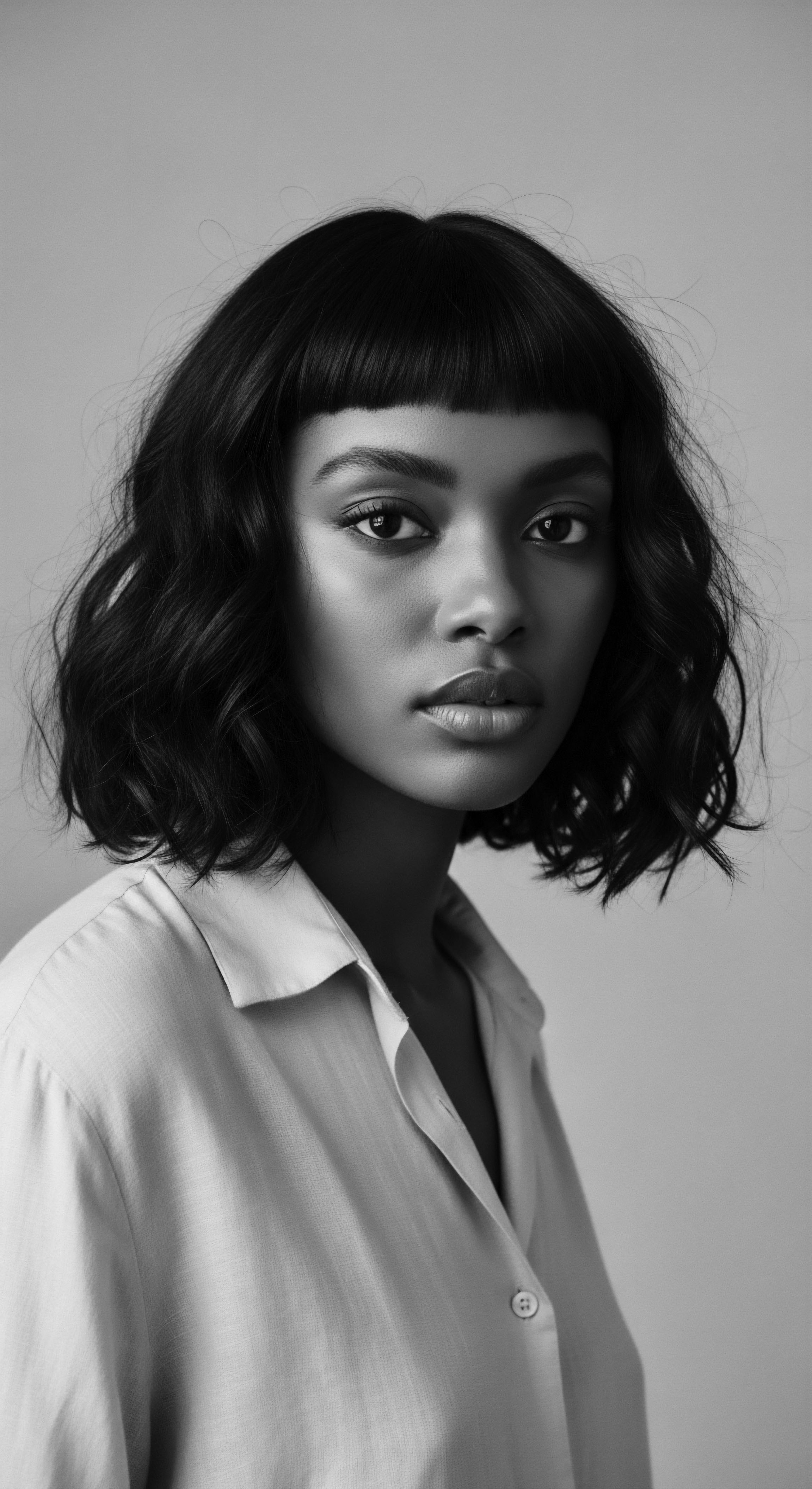
Academic
At an academic stratum, the meaning of Textured Hair Styling transcends mere cosmetic application or even cultural practice; it stands as a profound socio-cultural phenomenon, a semiotic system, and a testament to enduring human agency, particularly within Black and mixed-race diasporic communities. This is where the practice is dissected not just for its aesthetic outcomes, but for its deep historical roots, its psychological ramifications, its economic dimensions, and its persistent role in the construction and assertion of identity against often hostile backdrops. Textured Hair Styling, viewed through this lens, is a complex interplay of biology, anthropology, sociology, and personal narrative, a living archive inscribed upon the body.
The intellectual pursuit of its significance necessitates a departure from superficial observation, demanding instead a rigorous examination of its symbolic capital, its political implications, and its function as a site of both oppression and resistance. This comprehensive exploration acknowledges that the manipulation of textured hair is never a neutral act; it is always embedded within a larger framework of power dynamics, historical memory, and self-definition.

The Semiotics of the Strand ❉ Hair as Language
From an academic standpoint, Textured Hair Styling operates as a sophisticated non-verbal language, conveying complex messages about identity, status, and worldview. Each style, each adornment, each deliberate choice of manipulation can be decoded as a statement, a historical marker, or a communal affiliation. In many pre-colonial African societies, for example, hair was meticulously styled to communicate a person’s age, marital status, social rank, tribal lineage, and even their spiritual beliefs.
The very act of styling was often a communal ritual, strengthening social bonds and transmitting cultural knowledge across generations. The patterns created were not arbitrary; they were codified symbols, legible to those within the cultural matrix.
Consider the compelling, albeit harrowing, historical instance of hair as a literal cartographic device during the transatlantic slave trade and subsequent periods of enslavement in the Americas. In certain Afro-Colombian communities, particularly among the descendants of the enslaved who founded Palenque de San Basilio, women meticulously braided intricate patterns into their hair that served as escape routes or maps of plantations. These complex designs, often disguised as decorative styles, provided vital intelligence for those seeking freedom. Seeds, too, were sometimes braided into the hair, offering a means of sustenance or future cultivation in unfamiliar lands.
This practice, documented by scholars like Ayana Byrd and Lori Tharps (2001), underscores the profound ingenuity and resilience embedded within Textured Hair Styling. It transformed a seemingly simple act of personal grooming into a covert act of resistance, a silent but potent defiance against brutal subjugation. The meaning here is not merely aesthetic; it is a matter of survival, a testament to ancestral knowledge repurposed for liberation.
Textured Hair Styling functions as a powerful non-verbal language, historically used to convey identity, status, and even covert messages of resistance.
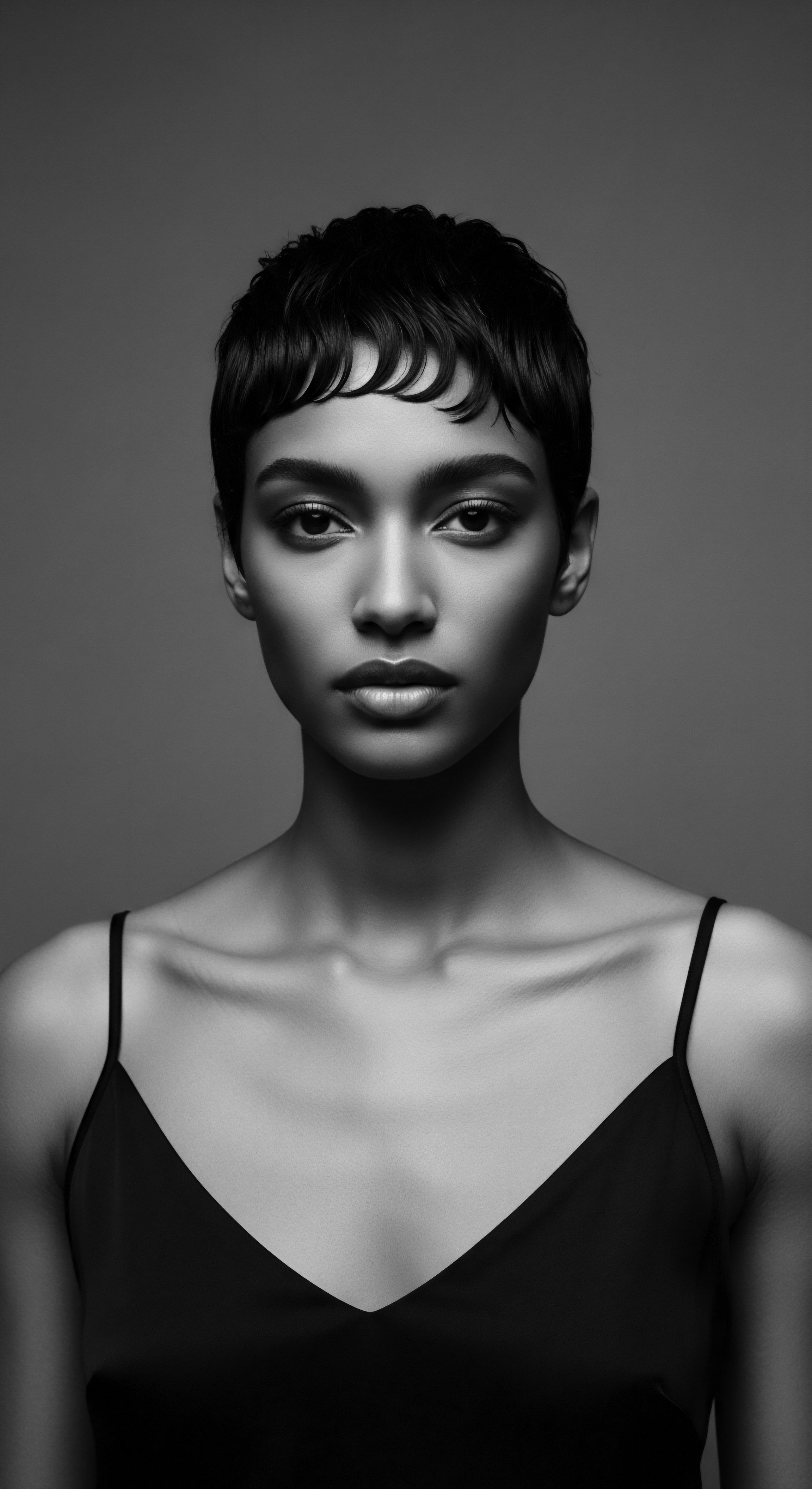
Sociopolitical Dimensions ❉ The Contested Terrain of Textured Hair
The academic examination of Textured Hair Styling must contend with its contentious history within Western societies, where Eurocentric beauty standards often demonized natural textured hair. This denigration was not accidental; it was a deliberate mechanism of control, designed to strip enslaved and colonized peoples of their cultural identity and reinforce racial hierarchies. The pressure to straighten, to conform, to render one’s hair “acceptable” in the eyes of the dominant culture has had profound psychological and social consequences. This historical context shapes the contemporary understanding of Textured Hair Styling as an act of self-acceptance, cultural reclamation, and political statement.
The Natural Hair Movement, for instance, represents a modern resurgence of this ancestral wisdom, framed within a contemporary sociopolitical landscape. It is a collective assertion of autonomy over one’s body and identity, a rejection of imposed beauty norms, and a celebration of the inherent beauty and versatility of textured hair. This movement has economic ramifications, fostering a vibrant industry dedicated to products and services tailored for textured hair, and social implications, challenging discriminatory practices in schools and workplaces. The legal frameworks emerging, such as the Crown Act in the United States, which prohibits discrimination based on hair texture and protective hairstyles, are direct responses to this historical and ongoing struggle, affirming the right to wear one’s hair in styles rooted in heritage without penalty.
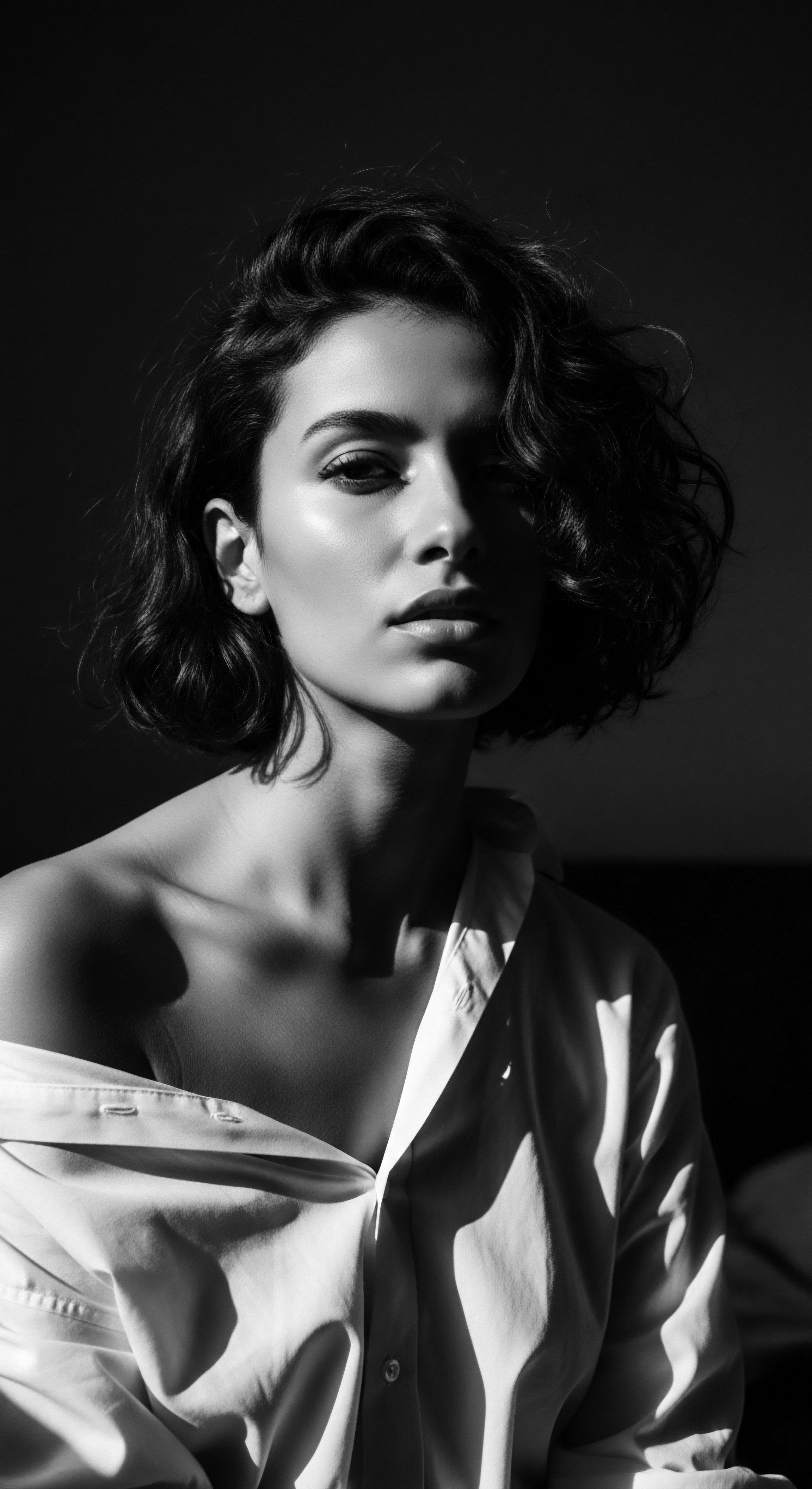
Psychological and Cultural Impact ❉ The Soul of a Strand Unbound
From a psychological perspective, Textured Hair Styling is intimately linked to self-esteem, self-perception, and mental wellness. For individuals with textured hair, the journey of understanding and caring for their hair often parallels a deeper journey of self-discovery and acceptance. The act of styling can be meditative, a connection to ancestral practices, or a communal experience that strengthens bonds.
Conversely, the societal pressures to alter or conceal natural texture can lead to internalized negativity, impacting mental health and body image. The reclaiming of traditional styles, therefore, is not merely a fashion choice; it is a therapeutic act, a re-membering of self and lineage.
The cultural impact is undeniable. Textured Hair Styling has served as a powerful vehicle for cultural preservation and transmission across the diaspora.
- Memory Keepers ❉ Specific styles can embody historical events, myths, or ancestral stories, acting as living mnemonic devices.
- Identity Markers ❉ Styles like dreadlocks or Afros became potent symbols of Black pride and political resistance during the Civil Rights era, asserting a visual identity that defied assimilation.
- Artistic Expression ❉ Hair stylists become artists, translating cultural narratives and personal expressions into tangible forms, pushing the boundaries of what hair can convey.
- Community Builders ❉ The communal act of styling, particularly within families or salons, reinforces social networks and provides spaces for shared experiences and intergenerational learning.
The continuity of these practices, even as they adapt to contemporary trends and technologies, underscores their enduring significance as vital components of cultural heritage. The understanding of Textured Hair Styling, therefore, demands an interdisciplinary approach, recognizing its biological basis, its historical evolution, its sociological implications, and its profound psychological and cultural resonance. It is a living, breathing aspect of identity, constantly adapting yet always tethered to its ancestral roots.
Academically, Textured Hair Styling is recognized as a complex socio-cultural phenomenon, embodying a powerful semiotic system, a site of historical struggle, and a profound assertion of identity and resilience.

Reflection on the Heritage of Textured Hair Styling
As we close this exploration into Textured Hair Styling, we are left with a profound sense of its enduring legacy, a testament to the wisdom carried within each coil and curl. The journey from elemental biology to sophisticated cultural expression reveals not just a history of hair care, but a living narrative of human resilience, creativity, and connection. It is a journey that affirms the ‘Soul of a Strand’ ethos, recognizing that every strand of textured hair holds within it echoes of ancestral practices, the whispers of untold stories, and the vibrant pulse of a heritage that refuses to be silenced.
The continuous evolution of Textured Hair Styling reminds us that heritage is not a static relic, but a dynamic, breathing entity, constantly reinterpreted and reaffirmed by each generation. From the protective styles of ancient civilizations, designed for survival and communication, to the bold statements of self-acceptance in contemporary movements, the essence remains the same ❉ hair as a conduit for identity, a canvas for expression, and a powerful link to those who came before. It is a practice that teaches us about patience, about the inherent beauty of difference, and about the quiet strength found in honoring one’s authentic self. The understanding of Textured Hair Styling is thus an invitation to connect with a deeper part of ourselves, to honor the wisdom of our forebears, and to carry forward a legacy of care and celebration that will continue to shape futures.

References
- Byrd, A. & Tharps, L. (2001). Hair Story ❉ Untangling the Roots of Black Hair in America. St. Martin’s Press.
- Gaines, A. (2017). The Politics of Black Hair. Palgrave Macmillan.
- Mercer, K. (1994). Welcome to the Jungle ❉ New Positions in Black Cultural Studies. Routledge.
- Patton, T. (2006). African-American Hair as Culture and Commodity. Rutgers University Press.
- Thompson, C. (2009). Black Women and Identity ❉ A Cultural History. University of Illinois Press.
- Banks, I. (2000). Hair Matters ❉ Beauty, Power, and Black Women’s Consciousness. New York University Press.
- hooks, b. (1992). Black Looks ❉ Race and Representation. South End Press.
- Okoro, N. (2018). African Hair ❉ A Cultural History. Indiana University Press.
- Byrd, A. & Tharps, L. (2014). Hair Story ❉ Untangling the Roots of Black Hair in America (Revised Edition). St. Martin’s Press.
- Ebony, M. (2020). The Curly Girl Handbook ❉ A Guide to Loving Your Natural Hair. HarperCollins.
